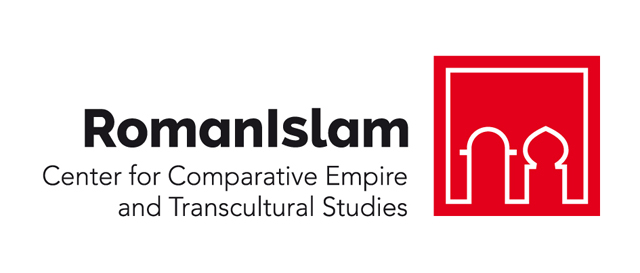Monasteries and Ribats as seat of religious devotion and power
"Monasteries in Late Antique Iberia. Places of power, places of resistance" by Pablo C. Díaz
When, at the end of the 6th century, monasticism began to spread massively over the Iberian Peninsula, its manifestations took very different shapes. The contrast between an “aristocratic” monasticism, built upon absolutely orthodox traditions which took place in the South, and other attempts of monastic organization mainly known in the former Roman province of Gallaecia, where monasteries resembled more an attempt of alternative social organization than a religious community, is especially remarkable. Between these extreme positions, we can find monastic forms, which are looking for a balanced adaptation leaded by the search of canonical solutions acceptable for the majority. However, the conflict among the different models went on until the eve of the Muslim invasion at the beginning of the 8th century, being even possible to trace later projections.
 Prof. Pablo C. Díaz is Full Professor of Ancient History at the University of Salamanca. He held a PhD in History from the University of Salamanca, where he carried out his thesis under the supervision of Professor Marcelo Vigil, dealing there with the study of the economic and social relations generated by the Visigothic monasticism in Hispania. He showed not only their role as reproducers of the current order, but also their ability to adapt to highly diverse environments, both because of their environmental conditions and because they represent antagonistic social and property concepts. He focuses his most recent research on the Late Antique period, especially assessing the impact that the invasions of the Suevi and Visigoths had on the preceding Hispano-Roman structures. This work is carried out from a multiple perspective, taking into account both the socio-economic aspects that are at the origin of his research, and political-legal and ideological-religious elements. Specifically, he is interested in the processes of institutional adaptability of the Suevi and Visigoths, the continuity or rupture in the forms of exploitation of the territory, or the response of peasant communities to the dominant forms in the environment. Such a process requires a global understanding of the Late Antique ownership structure; as well as the study of the coexistence of production mechanisms and the asymmetric appropriation of surpluses that are evidents in the sources of the period.
Prof. Pablo C. Díaz is Full Professor of Ancient History at the University of Salamanca. He held a PhD in History from the University of Salamanca, where he carried out his thesis under the supervision of Professor Marcelo Vigil, dealing there with the study of the economic and social relations generated by the Visigothic monasticism in Hispania. He showed not only their role as reproducers of the current order, but also their ability to adapt to highly diverse environments, both because of their environmental conditions and because they represent antagonistic social and property concepts. He focuses his most recent research on the Late Antique period, especially assessing the impact that the invasions of the Suevi and Visigoths had on the preceding Hispano-Roman structures. This work is carried out from a multiple perspective, taking into account both the socio-economic aspects that are at the origin of his research, and political-legal and ideological-religious elements. Specifically, he is interested in the processes of institutional adaptability of the Suevi and Visigoths, the continuity or rupture in the forms of exploitation of the territory, or the response of peasant communities to the dominant forms in the environment. Such a process requires a global understanding of the Late Antique ownership structure; as well as the study of the coexistence of production mechanisms and the asymmetric appropriation of surpluses that are evidents in the sources of the period.
"The Early Islamic Ribāṭ: From Zāhid Border Warrior Fortress to Ṣufī Monastery" by Deborah Tor
This lecture will examine the rise of the phenomenon of the ribāṭ, or border warrior fortress, on the Islamic-Byzantine border, from the earliest references to the institution in the 8th century, until the reconquest of Ṭarsūs by the Byzantines in the 10th century, in order to determine what precisely ribāṭs were and where they were located; who manned the ribāṭṣ; what their religious goals were; and the connection between the original border-warrior fortresses and the term later employed for Ṣūfī monasteries, from the late 10th/early 11th century. It will show that the ribāṭ are originally described as the fortresses of proto-Sunnī volunteer border warriors (muttawwīʿa), who were rigorous practitioners of asceticism (zuhd). Moreover, what characterized the ribāṭ was its being the abode or stronghold of border warriors, whence the warriors would set out on their jihad activities– and therefore not exclusively a location on the actual border, but also a staging ground in the nearby hinterland, used as a base for launching raids. It was thus natural, when Ṣufism later arose in the tenth century, that as part of the movement’s anachronistic appropriation of the early zuhhāḍ, it should have adopted the title for the collective dwelling of these zuhhād.
 Prof. Deborah Tor (PhD, Harvard University) is currently Associate Professor of Medieval Middle Eastern History at the University of Notre Dame. Her publications include the books Violent Order: Religious Warfare, Chivalry, and the 'Ayyar Phenomenon in the Medieval Islamic World (2007); The ʿAbbāsid and Carolingian Empires: Comparative Studies in Civilizational Formation (2017); the co-edited volumes Medieval Central Asia and the Persianate World: Iranian Tradition and Islamic Civilisation (2013); The History and Culture of Iran and Central Asia in the First Millennium AD: From the Pre-Islamic to the Islamic Period (forthcoming Spring 2022); The Islamic Byzantine Border: From the Rise of Islam through the Crusading Period (forthcoming), and some two dozen refereed major research articles. Some of the research awards she has won include fellowships from the German-Israeli Research Foundation (GIF); the Israel Science Foundation (ISF); the Institute for Advanced Study, Princeton (IAS); the National Endowment for the Humanities (NEH), the American Council of Learned Societies (ACLS), and the Israel Institute for Advanced Studies (IIAS), where she is currently a fellow for the 2021-2022 academic year.
Prof. Deborah Tor (PhD, Harvard University) is currently Associate Professor of Medieval Middle Eastern History at the University of Notre Dame. Her publications include the books Violent Order: Religious Warfare, Chivalry, and the 'Ayyar Phenomenon in the Medieval Islamic World (2007); The ʿAbbāsid and Carolingian Empires: Comparative Studies in Civilizational Formation (2017); the co-edited volumes Medieval Central Asia and the Persianate World: Iranian Tradition and Islamic Civilisation (2013); The History and Culture of Iran and Central Asia in the First Millennium AD: From the Pre-Islamic to the Islamic Period (forthcoming Spring 2022); The Islamic Byzantine Border: From the Rise of Islam through the Crusading Period (forthcoming), and some two dozen refereed major research articles. Some of the research awards she has won include fellowships from the German-Israeli Research Foundation (GIF); the Israel Science Foundation (ISF); the Institute for Advanced Study, Princeton (IAS); the National Endowment for the Humanities (NEH), the American Council of Learned Societies (ACLS), and the Israel Institute for Advanced Studies (IIAS), where she is currently a fellow for the 2021-2022 academic year.


